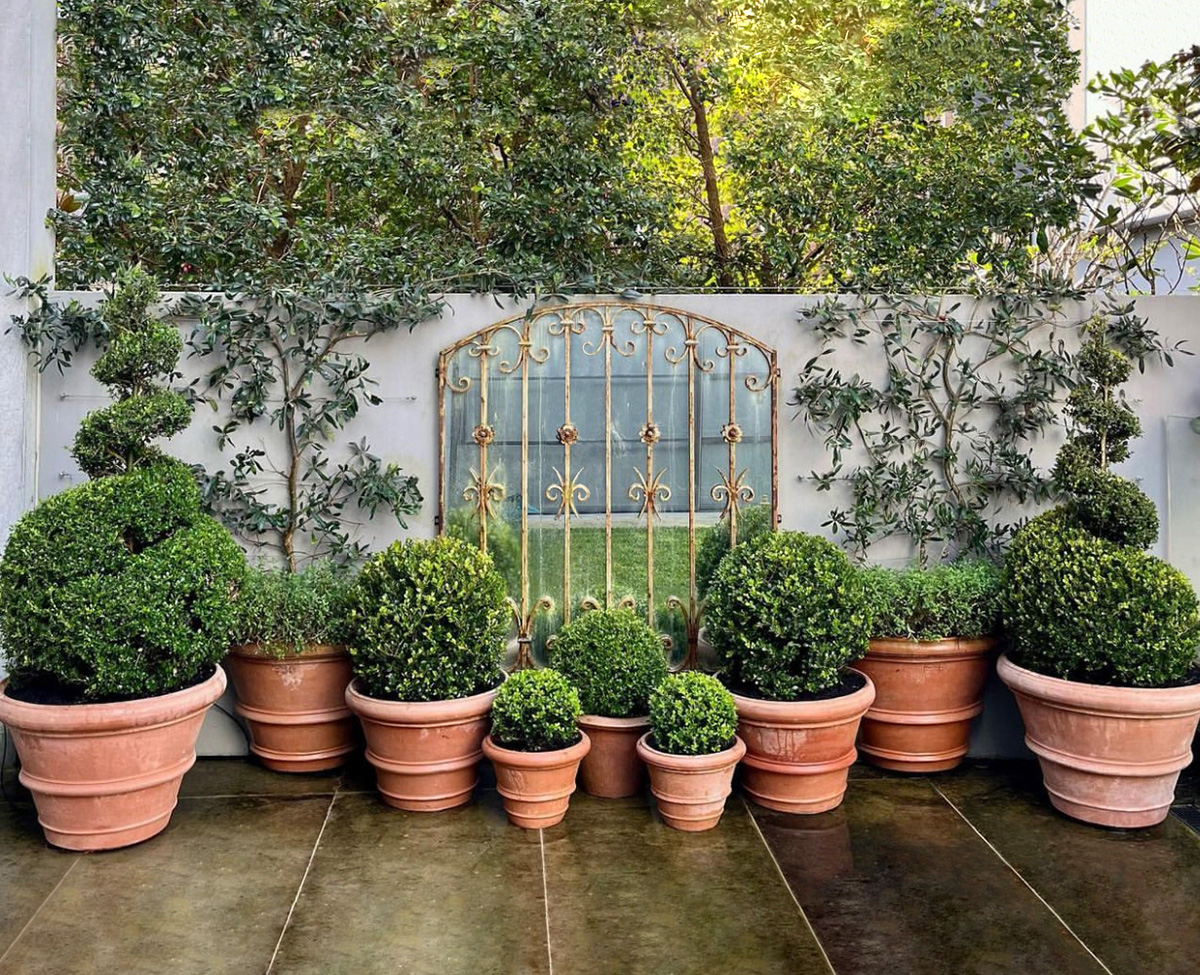
The Smooth Pot, the Two Rimmed Pot and the Festooned Pot and Vaso Festonato are three icons in the history of Impruneta terracotta, and have always been true protagonists of the Classic collection by Poggi Ugo.
All three share the same working technique – the so-called ‘shell’ technique -, all three share the same perfect truncated cone shape, and finally all three have in common the rim at the mouth of the vases.
It is only the addition of a few details that really differentiates them.
Let us start with the simplest one, The Smooth Pot, whose name already suggests its character: it has no great frills, but is characterised by a sober and elegant simplicity. The mouth of the vase is adorned with a beautiful turned rim, while on the stem one notices only a thin thread – called a ‘bigherino’ – that marks the vessel more or less in the centre.

As is often the case with objects from the past, the shape speaks of an intention of use rather than a merely aesthetic purpose; this is precisely the case with the Smooth Pot, which has a single rim as its only distinguishing feature.
As is often the case with objects from the past, the shape speaks of an intention of use rather than a merely aesthetic purpose; this is precisely the case with the Smooth Pot, which has a single rim as its only distinguishing feature.
The rim was created to facilitate the manoeuvres of moving containers, especially large ones; this is why Smooth Vase (as is also the case for the Due Orli and the Festonato) – has a concave rim at the top, so as to leave the right space for the fingers of the hands, which in this way have a secure anchorage point on which to grip.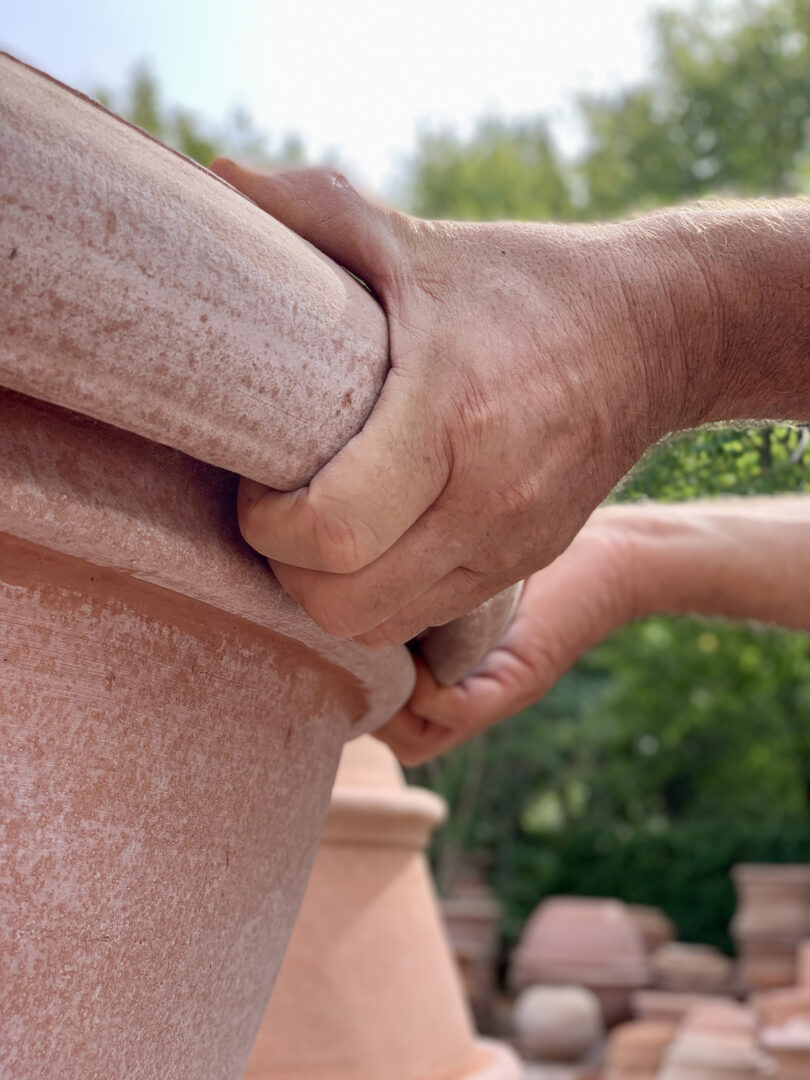
Due to its simple practicality, The Smooth Pot is found in the decoration of many Italian gardens and is therefore produced in different sizes, ranging from 15 to 60 cm in diameter.
The truncated cone shape, which starts at a narrower base and gradually widens towards the mouth of the pot, favours the flaring of the plants that dwell in these iconic containers.

The Festooned Pot, on the other hand, has a completely different flavour. In contrast to the Smooth Pot, it is characterised by its unmistakable decorations on the trunk. This model is also emblematic in Italian landscape history: examples of vases with festoons can be found in the most important historical Italian gardens, one of which is the Boboli Garden, which has been displaying them in its famous Limonaia since the 16th century.
It was in fact the Renaissance that rediscovered the Festoon as an ornament: this was originally a natural decorative element, created from an intertwining of branches, flowers and fresh fruit, which were hung from the columns of temples and altars in the Hellenic period; they were later also represented in bas-reliefs, frescoes and paintings, such as in the works of Andrea Mantegna or Della Robbia.
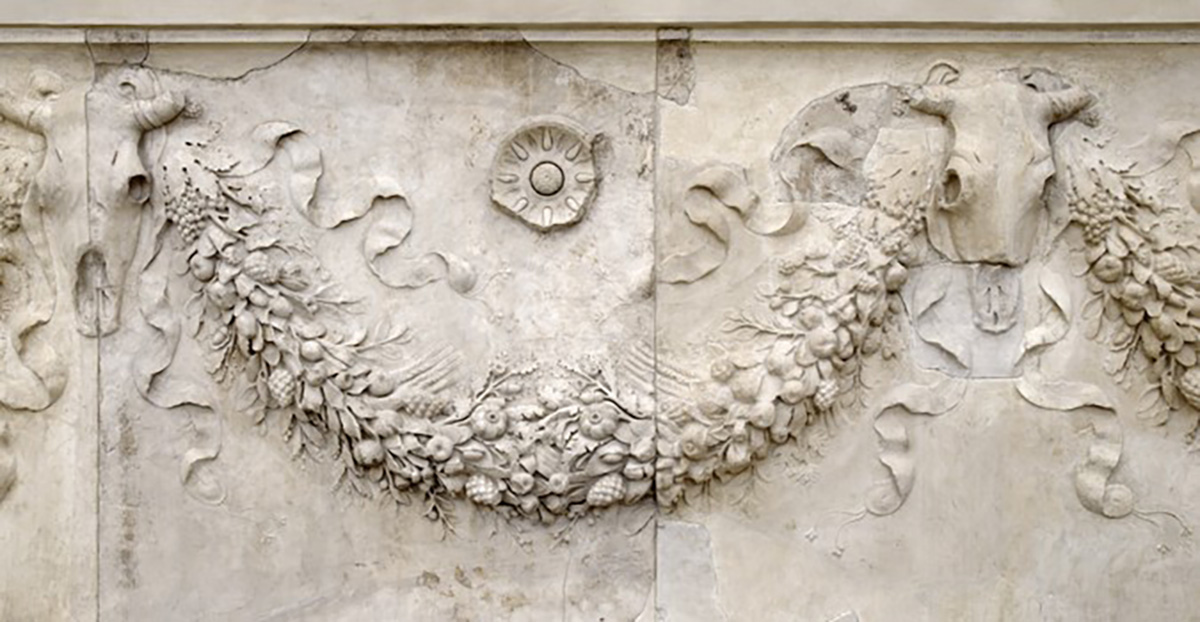
At the same time, the idea came to bring this rich and opulent decoration also to garden pots and basins.
The Festooned Pot was in fact one of the first models to enter the classic collection of garden articles by Poggi Ugo Terrecotte and has always been one of the most popular vases.

There are various types of festoons that are made freehand or using the moulding technique, and then applied one by one on the stem of the vase. These decorations can change depending on the size of the vase itself (produced in different variables, from 20 cm to 140 cm in diameter), firstly to fit harmoniously with the proportions of the container they are going to adorn, but also because having a larger surface area dedicated to decoration, it can become richer in minutiae and detail.
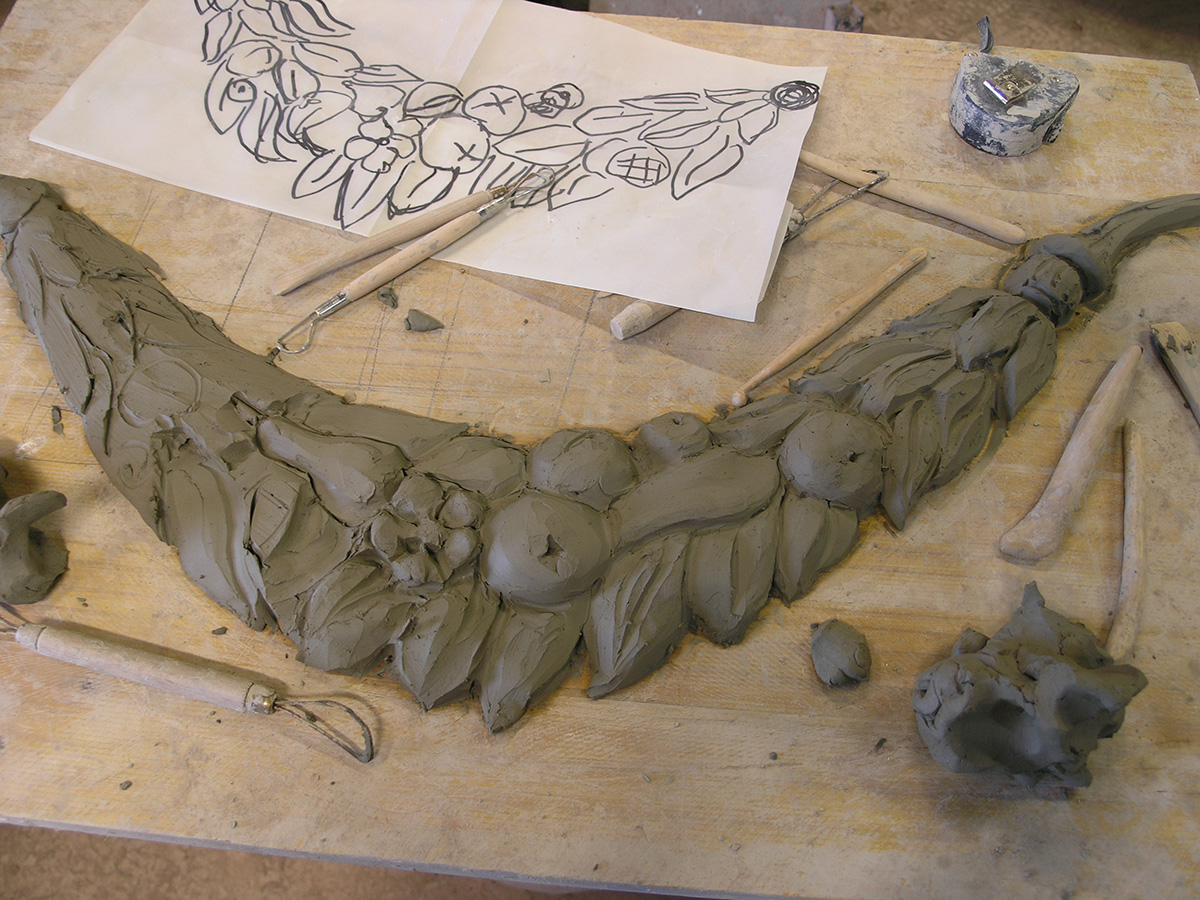
In an ‘intermediate’ position between the simplicity of the Smooth Pot and the opulence of the Festooned Pot, is the Two Rimmed Pot.
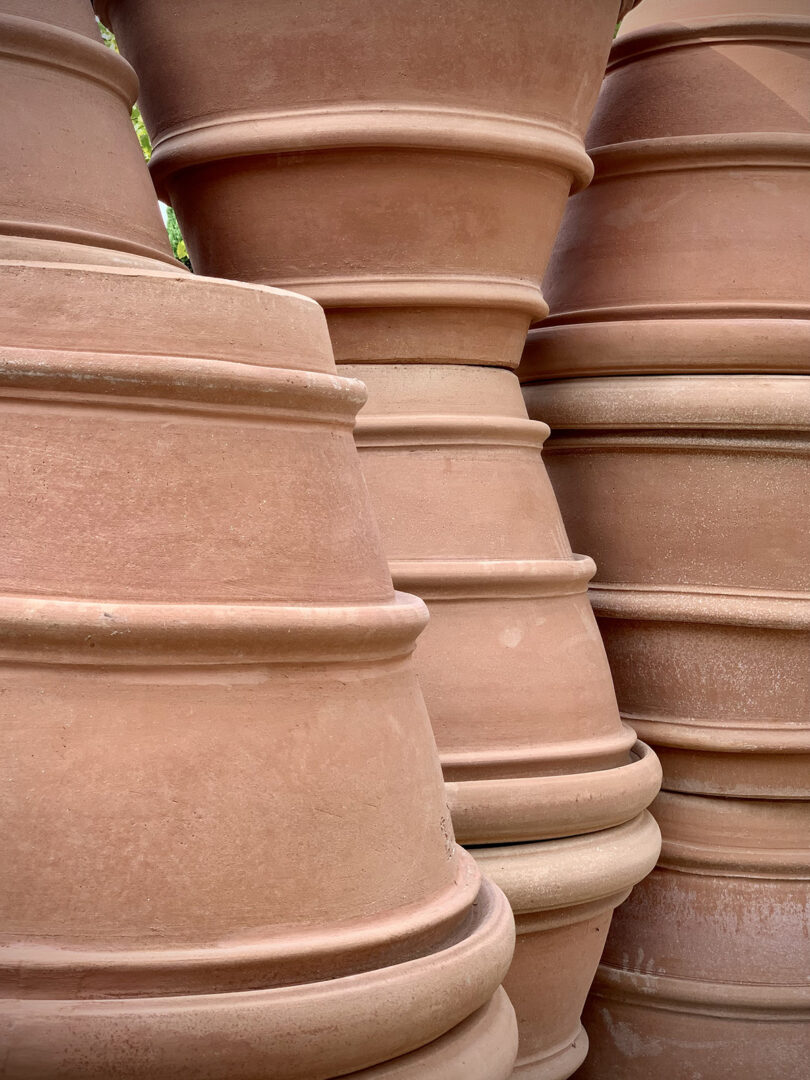
It was in the 1950s when some German customers requested the addition of a second rim above the ‘bigherino’ of the Smooth Pot, precisely because they found the latter a little too bare for the northern European market, while they considered the festooned vase too rich and opulent.
From that moment on, Cavalier Ugo Poggi had the intuition to introduce this new model into the Classic collection of garden articles, which has in fact become one of the iconic articles not only of the Poggi kiln, but of Impruneta terracotta pots in general.
Again, due to the success of the style of this container, production varies from the smallest sizes such as 20 cm, up to 140 cm in diameter: when we are talking about such large dimensions, it can take up to 90 days of work by a craftsman to complete the work…
The Two Rimmed Pot and the Festooned Pot are the models of which the most versions are made, precisely because of their unmistakable style, their perfect proportions and, above all, the ease with which they can be inserted into any landscaping project, whether used alone or even mixed together, always having the certainty of having chosen objects with a timeless beauty and a quality that will make them last for a long time: from generation to generation.

For more than 100 years now, at Poggi Ugo Kiln, we have been combining in our products the best material – Impruneta terracotta – the best workmanship, and also the best aesthetics to offer you garden furniture and accessories that will make you feel in Tuscany wherever your green space is.


Poggi Ugo Terrecotte srl
Via Imprunetana per Tavarnuzze n.16
50023 Impruneta – Firenze – Italia
Tel. +39 0552011077
info@poggiugo.it
P.IVA – C.Fisc: (IT) 05638490481
R.E.A: 562450 Firenze
Albo Lavorazioni Artistiche e Tradizionali n. 173862
Capitale sociale: euro 110,000,00 i.v.